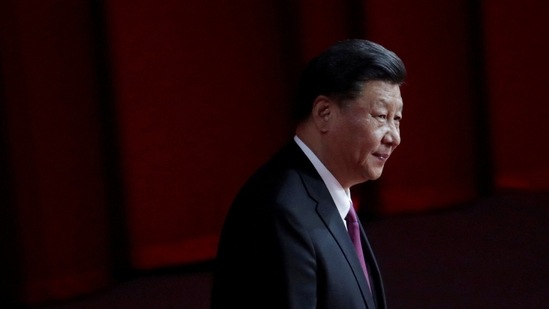The Xi Jinping decade of China: Explained
Xi Jinping: Xi amended the party constitution in 2017 to include Xi Jinping Thought on Socialism with Chinese Characteristics.
China's Xi Jinping became the country's top leader a decade ago when he was named general secretary of the Communist Party and chairman of the Central Military Commission at the party's 18th congress. The following March he became president.

At the 20th Party Congress, set to begin on Oct. 16, Xi is widely expected to secure a third leadership term, cementing his stature as the country's most powerful ruler since Mao Zedong, the founder of the People's Republic of China.
Xi accumulated power both through specific one-time moves and gradually over time. In doing so he moved China from a tradition of collective leadership, with the general secretary considered first among equals on the politburo standing committee, to what is now widely seen as supreme leadership.
Following are key ways that Xi strengthened his grip, according to analysts and experts:
- He circumvented economic policy-making responsibilities typically held by the premier by chairing various "small leading groups", including a new group formed in 2012 after he came to power for "reform and opening up", as well as an existing group on finance.
- He undertook a sweeping campaign to purge officials deemed disloyal, corrupt or ineffective, and built his power base by filling those vacant posts with allies. So far, 4.7 million officials have been investigated.
Read more: Joke twitter thread on China coup against Xi Jinping is now viral
- Xi put trusted allies in charge of party human resources management who control key personnel appointments. His first Organisation Department chief was Zhao Leji, whose father had worked under Xi's father; he was followed in 2017 by Chen Xi, a former Xi schoolmate from Tsinghua University.
- He tightened control of the military by initiating sweeping reforms and retrenchment from 2015.
- He controlled the domestic security apparatus with an ongoing "cleansing" campaign that has brought down many police chiefs and judges.
- From 2015, he ordered the parliament and other bodies including the cabinet and supreme court to brief him on their annual work reports
- Xi told state media in 2016 to toe the party line, that their "surname is the party". Since then, media freedoms steadily decreased, while Xi-related propaganda steadily increased.
- He formally established himself as the "core" of the party - party-speak for paramount leader, in 2016.
- Xi amended the party constitution in 2017 to include Xi Jinping Thought on Socialism with Chinese Characteristics. Having an eponymous ideology put him on par only with Mao and Deng Xiaoping.
- He made explicit the supreme role of the party by proclaiming in 2017: "Party, government, military, people, education; east, south, west, north, central: the party leads everything."
- He amended the country's constitution in 2018 to abolish term limits for the presidency, removing a obstacle for him to rule for life.
- The party pledged to uphold the "Two Establishes", party-speak for loyalty to him, in a historical resolution passed in 2021.



